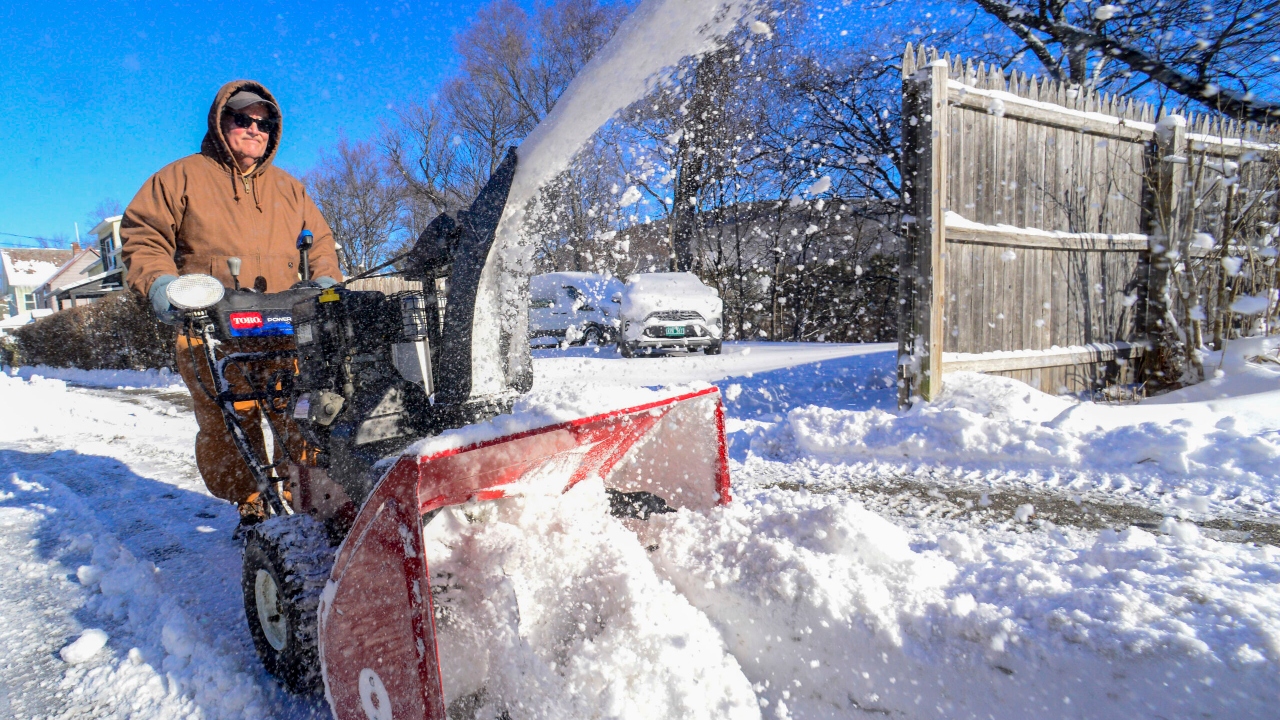
Indiana woke up to its first hard freeze of the fall on Friday, October 24, twelve days earlier than usual. Overnight lows plunged into the upper 20s°F across much of the state, ending the growing season in a single sweep. The National Weather Service (NWS) issued Freeze Warnings from 2 to 9 a.m. Saturday for over 40 counties, marking the earliest widespread cold snap since 2013.
Meteorologists say the abrupt chill was driven by a polar vortex disturbance that unleashed Arctic air into the Midwest weeks ahead of schedule. Atmospheric data show October’s stratospheric winds running far below normal, mirroring conditions last seen in the early 1980s. The shift has also jolted markets: natural gas futures for November climbed to about $3.45 per million BTU by October 22 amid rising winter heating demand.
Rush to Protect Plants, Homes, and Pipes

Across Indiana, residents scrambled to brace for the freeze. Gardeners draped tarps over vegetables while homeowners insulated pipes and wrapped outdoor faucets. The NWS warned that “frost and freeze conditions could kill crops, other sensitive vegetation, and damage unprotected plumbing.”
Even a small pipe crack—just one-eighth inch wide—can spill roughly 250 gallons of water daily, highlighting how one cold night can turn costly. Demand for foam pipe sleeves and faucet covers soared, with some hardware stores selling out within hours. “Now is the time to protect yourself, pets, plants, and pipes!” the NWS Indianapolis posted on social media.
Protective gear came at a premium: insulation kits costing $20–$100 were flying off shelves, while growers turned to frost blankets and heaters priced up to $200 per acre to shield crops. “We sold more frost cloths this week than in the past two seasons combined,” said Kelsey Moran, owner of an Indianapolis garden center.
Harvest Mostly Safe, but Specialty Crops Hit
Despite the freeze, Indiana’s major grain harvest escaped heavy losses. With roughly 75 percent of the corn and soybean crops already gathered, damage was minimal. “A late-October freeze might trim yields slightly, but nothing catastrophic,” said Steven Heightchew, an agronomist with AgriGold. USDA analysts still expect record yields—205 bushels per acre for corn and 61 for soybeans in 2025.
That’s not the case for vegetable and ornamental growers. Many lost the season’s late produce—tomatoes, squash, and peppers—overnight. “We covered what we could, but the rest is gone,” said J.R. Roesner, a farmer in Dubois County, who noted that earlier drought and now the freeze “bookend what’s been one of the toughest growing years in memory.”
Still, most growers expressed cautious relief. “Given how dry we were, we’re grateful the crops ended stronger than expected,” said LaPorte County farmer Denise Scarborough.
Cold Costs: Energy, Infrastructure, and Markets

The chill will hit Hoosier wallets as well as fields. Northern Indiana Public Service Co. projects average household heating bills of about $665 for the November–March season—up 16% from last year. Rising gas prices are the main factor, as nearly 60% of state households heat with natural gas.
Energy experts warn that demand spikes quickly once furnaces switch on. “Heating and cooling account for over half a home’s energy use,” AES Indiana reminded customers, urging thermostats to stay above 55°F to prevent frozen pipes.
State climatologist data show that while autumns have warmed overall—pushing the average first freeze about 12 days later since 1970—sharp cold spells are becoming more erratic. Polar warming may be weakening the jet stream, allowing Arctic air to surge south unpredictably. “Winters overall are warming, but the cold snaps that do occur can be more extreme,” said climate researcher Jin-Ho Yoon.
From Farms to Roads: Preparing for Winter Ahead

Indiana’s $31 billion farm industry depends on good timing, and state agencies worked overnight to cushion impacts. Purdue Extension issued alerts advising farmers to apply fall nitrogen early, drain irrigation lines, and use high tunnels for late-season produce.
Local and state governments also swung into action. Indianapolis officials filled salt barns with more than 18,000 tons of road salt and began pre-treating highways. “It’s never too early to plan,” Mayor Joe Hogsett said, noting that early freeze–thaw cycles often worsen potholes and drive maintenance costs up.
On the national scale, Indiana’s freeze was part of a broader cold wave stretching across ten states, from Minnesota to North Carolina. The NWS reiterated that “a hard freeze marks the end of the growing season” across the Midwest.
A Glimpse of a Volatile Winter

Agriculture leaders say this year’s early freeze underscores a new reality: irregular climate patterns are redefining what “normal” means for Indiana farmers. Many are already adapting by shifting planting dates, choosing faster-maturing crop varieties, and investing in soil and water management practices.
Meanwhile, markets and policymakers are watching how these swings affect energy planning. The polar vortex shift that triggered Indiana’s freeze could recur later this winter—AccuWeather forecasters warn that late January holds “the greatest potential for another deep Arctic outbreak.”
For now, Hoosiers are thawing out, patching pipes, and reflecting on the warning shot nature just fired. As one Purdue Extension agent put it, “We can’t control when winter comes early—but we can be ready when it does.”